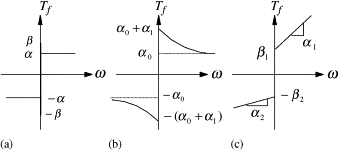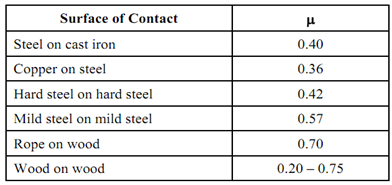Mathematical Representation of Laws of Friction:
As P increases, F shall also increase correspondingly till the limiting condition of impending motion. The maximum value of F that can be developed is called limiting static friction and is proportional to the normal reaction N.
Mathematically,
F ∝ N
∴ F = μ N

here, μ is constant and is called the coefficient of static friction between the given two surfaces. The angle between the normal reaction N and the resultant reaction R is called the angle of friction. If it is denoted by φ, then we obtain,
tan φ = F/ N = μ
Therefore, the tangent of angle of friction is equal to the coefficient of friction.
It is our common experience that when the body begins to move, there is a decrease in frictional effect from the limiting static friction.
This shows that there is a drop from the limiting frictional effect to a frictional effect that is constant along time. This is independent of the velocity of the object.
Generally, the coefficients of friction for dynamic conditions are about 25 % less. Table gives the values of static coefficients of friction:
Table
